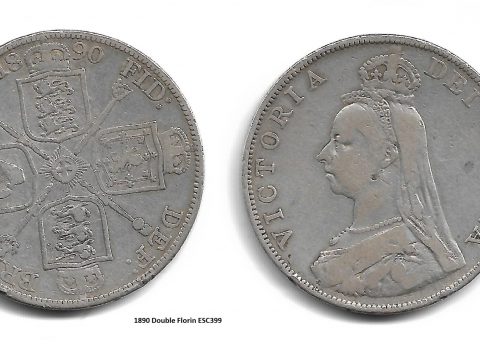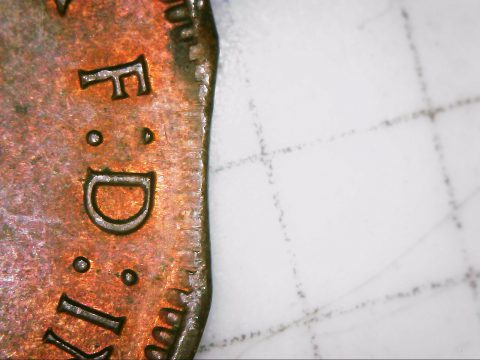We all have to start somewhere and these days the place seems to be social media. Whilst there are some brilliant groups with people with lots of knowledge of coins from around the globe, these groups can be very frustrating due to the large number of “what’s it worth” posts accompanied with a picture of a standard circulation coin. What I want to do here is provide some information for beginners that will help them to help their selves.
Firstly, if a google search says your coin is worth, for example, £1,000, this is probably too good to be true. Take this eBay posting of a bog-standard 50p, things that should provide a warning are “Brilliant”, “Rare” and “Circulated” in the same sentence, and I hope that by the end of this blog you will know how to see through things like this with a little research.

Edit: Etsy also seems to be a common result when Googling a coin’s details. I’m not sure if it is people trying to see if anyone is gullible enough to pay the rather silly prices or if it is someone looking to launder cash. Needless to say “Caveat Emptor“, and “if it seems too good to be true…”.
So you have a coin you want to know more information about and the research should be an enjoyable part of the process. You have a couple of options to assist you with the research, an app such as coin scope, web searches, and specialist websites such as Numista, the former is especially useful for coins where the inscription is not understandable (i.e. Chinese script, Cyrillic, etc.).
Most coins in the world have their country of origin written on them so Numista is a good place to start. Numista allows you to search by country and then filter the results based on a number of search criteria:

If I am researching a coin I will filter by country and then the date and also the face value. In 90% of the searches, this will bring back the coin you are looking for and you can then drill into more detail about the coin including its composition and any varieties.
Occasionally you will come up against coins that have no meaningful information, such as no distinguishable information about the country of origin, in this situation you can type the wording into the lettering search criteria and see if that brings back any information.
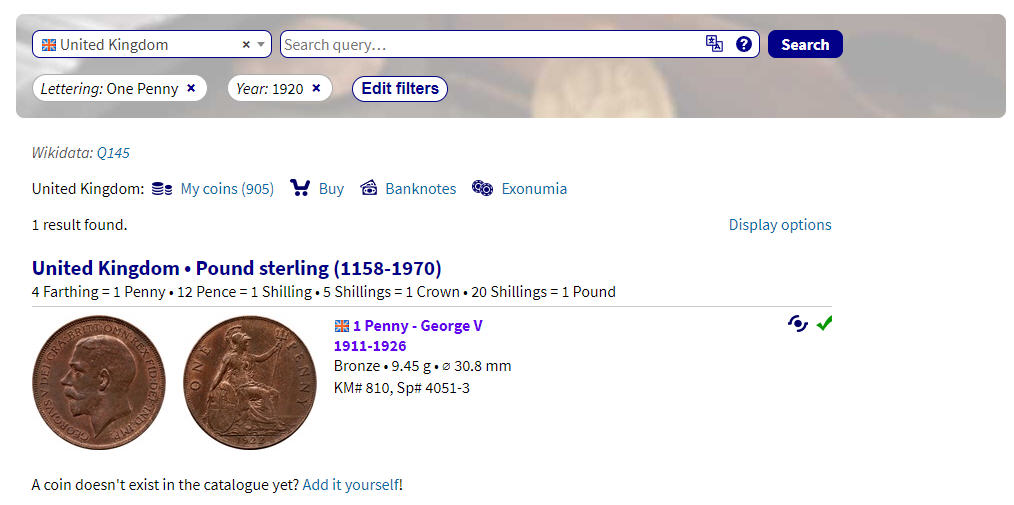
If all else fails, or the writing on the coin is not in the Latin script then I will resort to an app such as coin scope followed by one of the many Facebook groups (see the I still don’t know… section below)
But how much is my coin worth?
This is the age-old question, what’s it worth? This is probably the most common question I see on many groups on Facebook and it is a difficult question to answer as the value of something depends on many different factors such as:
What is the Grade?
Grading is a process where a coin is compared to defined criteria. For a novice collector, it is important to understand what these different grades mean as it will mean the difference between a £1 coin and a £100 coin, for instance.
Basic descriptions of the different grades can be found here:
But I would urge anyone to watch this series of Youtube videos on the PCGS channel as it goes into some detail about grading and what to look for. The US Red Book also contains brief descriptions of the main points to look for in each grade
For UK pre-decimal coins I use this book which contains descriptions for each type of coin on what to look for in each grade.
Is it a Variety?
Now, this is where it starts to get technical. When you have several different mints or a large production run you will have several different dies being used. I am not 100% on the process but I think that they will have been produced by a master die so in theory the dies used to produce the coin should all be the same (baring any mint marks (US)). However, from time to time dies will need to be repaired and this can lead to doubling of digits (see later section). In the US there is a tendency to create a variety for this and the PCGS website has a wealth of information on this (see below).
Another cause of varieties is where the mint changes the dies, maybe with an updated die for whatever reason. This happened many times in the pre-decimal era producing many different varieties, such as the 1915 recessed ear and the 1902 Hi and Low Tides to name just two.
Some varieties are rarer than others and it will be these rarer examples, more so in the higher grades, that will be worth the money.
It must be mentioned that there are two types of variety, major and minor. Whilst aimed at the US collectors, this PCGS page has some good information on this subject and I would urge everyone to have a read. For UK collectors I would start with Declan Magee’s website, if you can get them, historical editions of Coin Monthly, or check out the links here.
Is it a precious metal?
This is where you can get a base value. For precious metals, the base value will be the weight of the precious metal multiplied by the current price for that grade of metal. For instance, the base value of a UK 1921 Shilling (.500 silver) at 5.65g will be £1.58, for its 1919 counterpart (.925 silver) it’s £3.16. The numismatical value of the coin may be much high though.
Yeah… But how much is my coin worth?
Hopefully, by now you have had a look through Numista or Coinscope and have identified the coin in your possession. You will have discovered from Numista if it is a rare coin or not by looking at the indicated values and mintage figures for the denomination, date, and mintmark, as well as details on any varieties to look out for and are in a position to see what the coin is worth… The blunt answer is the coin is only worth what someone is prepared to pay for it!
To get an idea of the worth of a coin I find the most efficient way is to use eBay BUT with the Sold item filter switched on. This will show you what similar coins to yours have sold for. Make sure you only look at ones that are in a similar grade to your coin. Don’t look at a mint state coin and compare it to your well-used and worn example for instance.
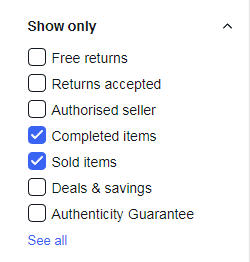

The PCGS do have, for our US readers, a handy price guide, but this should always be looked at as a guide and not gospel as the coin is only worth what someone is willing to pay for it! It’s the same for the Red Book and UK price guides.
I still have no idea what this coin is
This is ok, there are many people who will and want to help you. There are various Facebook groups out there you can join to ask questions. What I will say though is do the research above first. Try and find out a bit before you ask, you may be surprised as to what you can find out.
If you do want to ask questions, please take nice, detailed photos of the coins. You will want to take a photo like this:
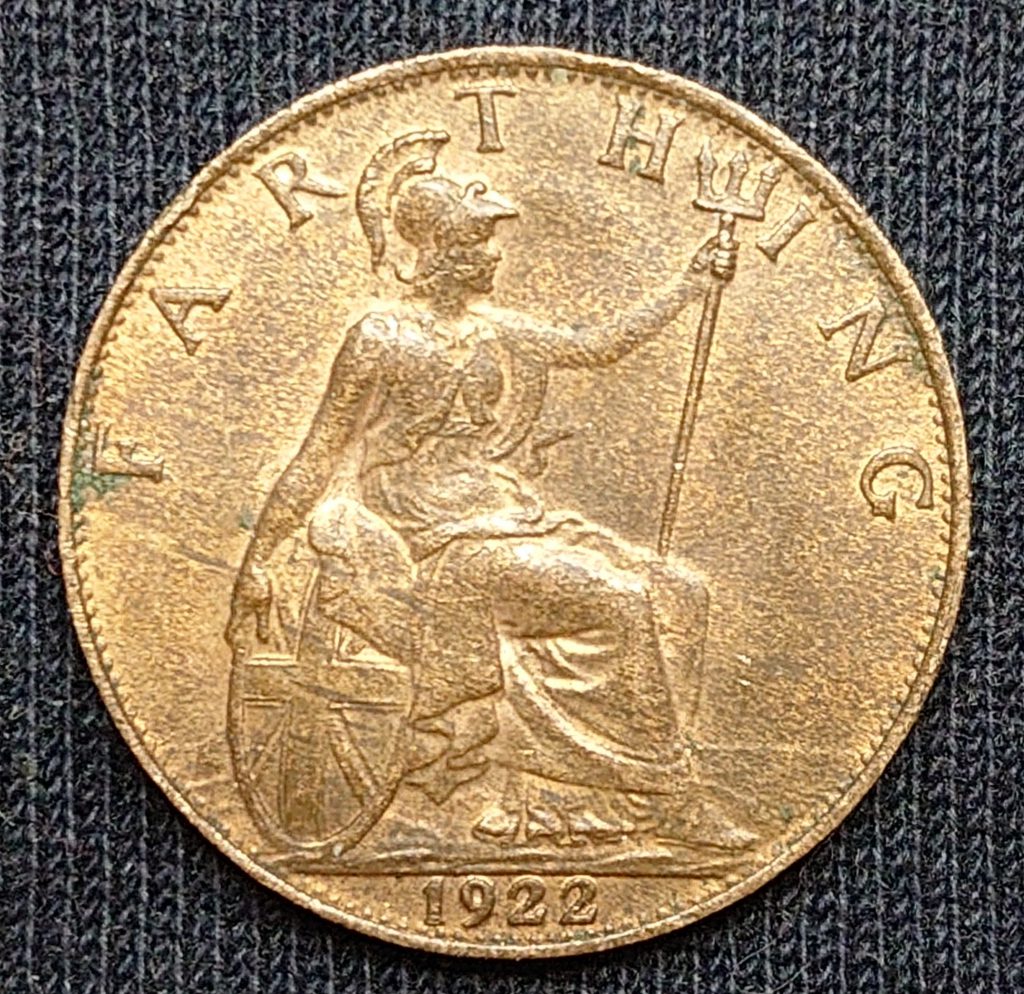
This photo of a Farthing was taken with a smartphone. You do not need expensive equipment to take a photo like this but it will help with your query. Too many times I have seen a blurry photo with the caption “how much is it worth”… and an answer along the lines of “how can we tell what it is never mind what is it worth without a good photo!!!!”.
All you need for a photo like this is a well-lit area, an empty mug, and your smartphone:
- Get your mug and place/balance your smartphone on top
- With your camera on, line up the coin so it is in view, zoom as needed
- Take your photo and take a photo of both sides
- if you have a phone that can take photos hands-free, then this will be usefull.
If posting to Facebook, you can edit your photos when creating your post, this includes rotation and cropping of the images. When creating the Facebook post, be descriptive and give details of the research you have done so far and if you think it is an error, give details as to why you think it’s an error (I will look to create posts on the various errors in due course).

